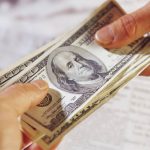As expected, the Federal Open Market Committee (Fed) raised its rate to 1.75 percent (up from 1.5 percent) at its most recent meeting March 20 and 21. The hike came in spite of warnings and predictions of disaster and doom by some financial heavy-hitters.
Under former chair Janet Yellen, the Fed was able to meet many of its goals during her term. One goal that dogged Yellen all the way to the end was that of achieving a two percent inflation rate. Inflation continued to hover just below or above the two percent mark. The rate hikes that have already occurred, as well as those proposed for the rest of 2018 and 2019, are meant to rein in inflation and achieve the two percent benchmark.
Cambridge Realty Capital Companies founder Jeffrey Davis believes the Fed is going out of its way to be transparent with the rate hike. “I’ve been impressed with the Fed’s transparency for many years. Because many prior Fed chairmen needed to have their quotes deciphered by the audience from some cryptic language, more recent chairmen such as Paul Volcker, Janet Yellen, and current chairman Jerome Powell have gone out of their way to be transparent in their thinking. I believe this leads to much more confidence and business-friendly thinking.”
Why two percent? A two percent inflation rate has been judged to be the US’s “Golden Ticket” to the healthiest possible economy. According to the Fed, anything less than two percent increases the risk of a catastrophic deflation (think Newton’s third law: “for every action there is an equal and opposite reaction”). Above two percent, and it becomes difficult for borrowers of all types to “make accurate longer-term economic and financial decisions” (Federal Reserve FAQ page https://www.federalreserve.gov/faqs/economy_14400.htm), a situation that could also lead to economic disaster.
Not everyone agrees, including Scott Minerd, Global Chief Investment Officer of one of the world’s oldest multinational investment companies. Minerd was quoted in a March CNBC news post, written by Tae Kim, expressing his concerns over what he sees as a misguided attempt to achieve and maintain a two percent inflation rate, in spite of what the Fed sees as a historically-sound approach.
It all stems from the economic stimulus package that came into play after the 2008 recession, which is now being gradually reined in. “I have come to realize that the markets are potentially on a collision course for disaster. The collision course is being brought about by strong fiscal stimulus in the late stage of the business cycle, when conventional economic wisdom mandates that it should be heading the other direction to create fiscal drag,” Minerd said. “With the huge fiscal stimulus coming online, the Federal Open Market Committee (FOMC) will feel obliged to play the role of creating economic headwinds.” (https://www.cnbc.com/2018/03/27/investment-chief-of-250-billion-firm-says-financial-markets-are-on-a-collision-course-for-disaster.html)


